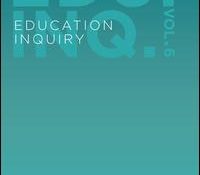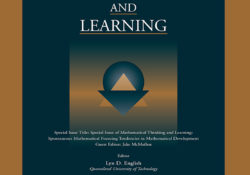tandfonline.com har udgivet en rapport under søgningen “Teacher Education Mathematics”: ABSTRACT ABSTRACT Children in foster care may face difficulties during their school years. When it comes to academic achievement, there is reported low school performance and lower grades. However, school may be strong protective factor in difficulties if supports are individual. School-based interventions represent a possibility for supporting children whose home life may make them vulnerable. This discussion paper presents Finnish initiative, which is based on Skolfam® model used in several Nordic countries. Link til kilde
Like this:
Like Loading...
eric.ed.gov har udgivet: Public investment in pre-K programs across the US has expanded over the past two decades, primarily to increase access to pre-K programs, especially among low-income children and children of color. However, program quality varies across states. One key question policymakers and practitioners have posed is how to create high-quality early childhood educational environments that promote successful outcomes for all preschool-aged children. This study considers the role of professional development supports in helping teachers create high-quality learning experiences for children. It examines three professional development supports that early childhood programs often provide (teacher training, coaching, and common planning time), whether these supports predict various aspects of observed teacher practice, and whether the associations between professional development supports and teacher practice vary based on teachers’ experience. Findings suggest that… Continue Reading →
Like this:
Like Loading...
eric.ed.gov har udgivet: As a growing body of evidence links school success and early mathematical experiences, there is increasing interest in offering young children opportunities to bridge their informal understanding of mathematics with more formal concepts and processes. At the same time, many teachers and caregivers in the early care and education (ECE) field may not be adequately equipped to provide appropriate math-related experiences and instruction to young children age birth through five. The aim of this project, Strengthening the Math-Related Teaching Practices of the Early Care and Education Workforce, has been to identify promising practices and strategies for enhancing the ability of ECE practitioners to promote children’s mathematical understanding and competence. This paper summarizes the perspectives of nationally recognized experts in the field of mathematics and early care and… Continue Reading →
Like this:
Like Loading...
tandfonline.com har udgivet en rapport under søgningen “Teacher Education Mathematics”: ABSTRACT ABSTRACT In this study we investigated the effects of two naturalistic 2- to 4-year-old children’s intervention programs aimed at promoting children’s Spontaneous Focusing On Numerosity (SFON) and early numerical skills. The study consisted of a quasi-experimental, pretest-posttest design with a delayed posttest and an active control group participating in the Let’s Read and Talk program. All conditions had 6 weeks of intensive training followed by a 4-month rehearsal phase, when intervention activities were integrated into normal day care. The results of both numerical interventions in the whole group level show positive, small- to medium-sized long-term effects on cardinality-related skills from pretest to delayed posttest. The SFON tendency increased more from pretest to posttest in both studies but the group differences… Continue Reading →
Like this:
Like Loading...

